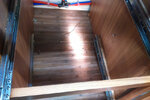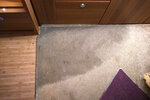Hi all, I’ve read numerous threads on here regarding using either the hose that goes from the tap on a fully serviced pitch to the caravan or using the float in the aqua roll, although I’ve read plenty of topics I’ve never been able to be decided as to which is the safest.
1st. Float in aqua roll system, if a pipe in the caravan leaks then due to the pressure drop the aqua roll will refill endlessly and the water will leak in the caravan with the van getting flooded.
2nd using the other system which I believe has a pressure lowering system so that the water pressure in the van is lowered, so again if I’m right, if a pipe in the caravan was to leak then due to the pressure was to drop, the pump would again keep pumping so as to try to bring up the pressure, same result as I see it both systems would flood the caravan endlessly.
Is there any benefit in one system above the other, any input as to which is most reliable and why.
BP
1st. Float in aqua roll system, if a pipe in the caravan leaks then due to the pressure drop the aqua roll will refill endlessly and the water will leak in the caravan with the van getting flooded.
2nd using the other system which I believe has a pressure lowering system so that the water pressure in the van is lowered, so again if I’m right, if a pipe in the caravan was to leak then due to the pressure was to drop, the pump would again keep pumping so as to try to bring up the pressure, same result as I see it both systems would flood the caravan endlessly.
Is there any benefit in one system above the other, any input as to which is most reliable and why.
BP



